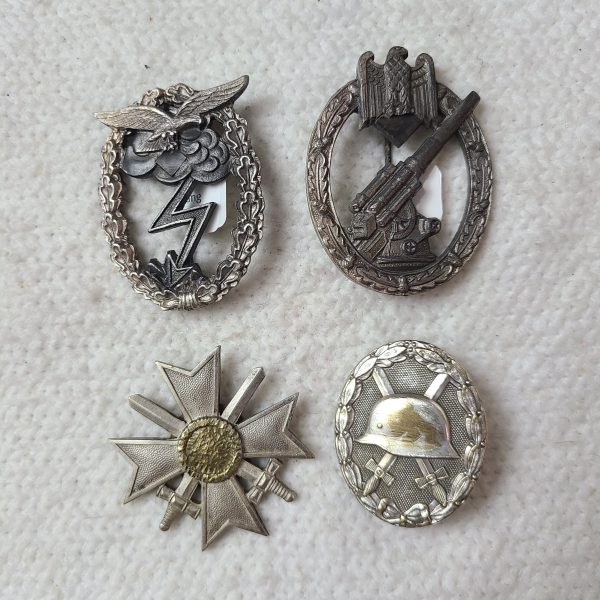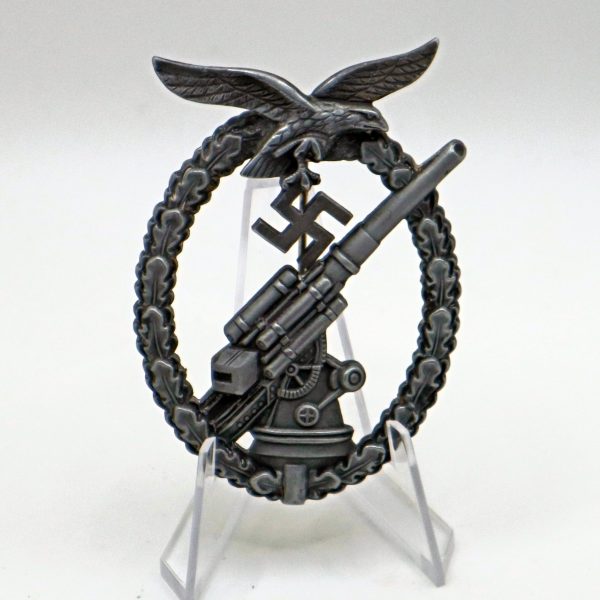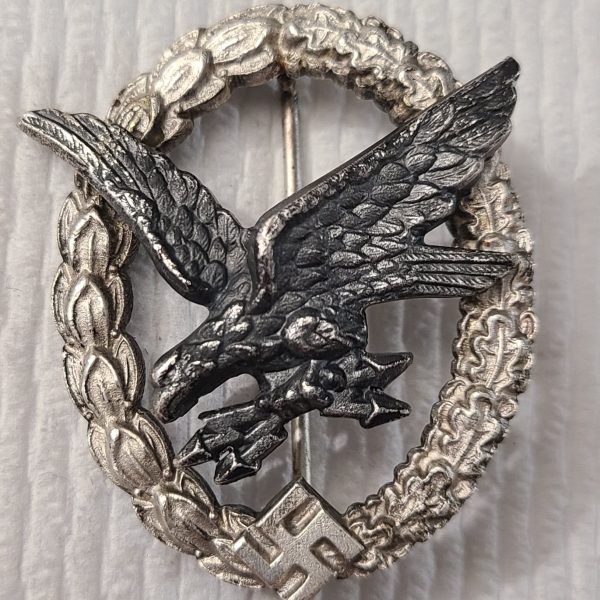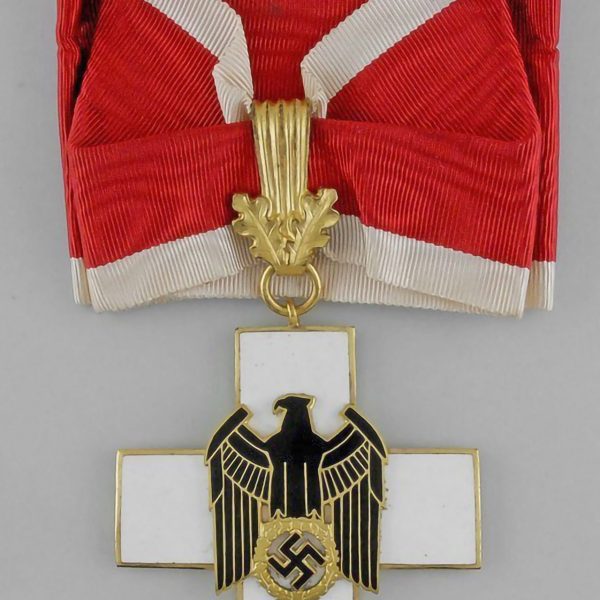Condition: Near Mint
Maker: Förster & Barth
Material: Zinc
Measurements: 58.2mm H x 42.8mm W
Weight: 21.85 Grams
An original Heer Flak Badge by Förster & Barth (Heeres-Flakabzeichen) semi-hollow silvered zinc construction. The obverse depicts oval leaves and acorns surmounted by the heer national eagle clutching a swastika and an 88 flak gun elevated facing towards the right. The reverse of the badge is unmarked but attributed to Förster & Barth, Pforzheim, with a typical sheet metal hinge, and the retaining pin goes from thick on the top to thin to thick again with a flat wire catch soldered to the badge.
The badge has no damage or repairs and is in fine condition. There is a professional engraving under the pin marked R.S.S. I can only assume this was for the awardee.
The Army Flak Badge was established on July 18, 1941, by Generalfeldmarschall von Brauchitsch, the Supreme Commander of the Army, to recognize members of anti-flak batteries, searchlight crews, and sound-locator crews, who distinguished themselves in actions against Allied aerial attacks.
Initially, the badge was awarded for group achievement instead of individual achievement. Units would receive it after downing five targets. Commanders of units would receive it after at least half of their men had received the badge. This was later changed, and a point system reflecting the requirements needed to receive the Luftwaffe Flak Badge was also instituted for the Army Flak Badge. To receive the badge, an individual had to accumulate a total of sixteen points. Initially, two points were conferred for downing an enemy aircraft with the assistance of another flak battery. If a sole battery was responsible for bringing down an aircraft, each member involved received four points. One point was awarded to search and spotlight crews for every enemy aircraft they detected. During the later stages of the war, this was slightly changed. From then on, the badge could be awarded after participating in three air defense actions that resulted in a plane’s downing or five air defenses, regardless of the downing of planes.
Award conferrals were authorized by Commanders who held the rank of Artillery General or higher. The Army Flak Badge was strictly conferred for the fighting of aerial targets, while the General Assault Badge was awarded for the fighting of ground-based targets.
The badge was designed by the firm of Wilhelm Ernst Peekhaus in Berlin.
The only maker known to have produced Tombac Army Flak Badges is C. E. Juncker. All other makers exclusively produced solid die-cast zinc badges, with Förster & Barth being the only company to fashion not only solid but also a number of semi-hollow badges.
Compared to the Luftwaffe Flak Badges, the Army Flak Badges are relatively scarce.
Most badges by Förster & Barth are unmarked, however a few feature the company’s LDO number, L/21.

-

-

-

-
World War 2 was one of the most significant conflicts in modern history. Millions of soldiers and civilians died in the fierce battles between the Allies and the Axis.
Tales of courage and sacrifices still live in the military artifacts that remain in our grandparents’ attics, basements, and footlockers. Iron Cross HQ is very proud to offer a wide selection of WWII uniforms, WWII field gear, weapons, medals, decorations, photos, and more, for sale at Iron Cross HQ Store. Reproduction items and originals are available for Militaria collectors and reenactors.
Iron Cross HQ, as the seller of War memorabilia, would like to emphasize that these items are sold as historical artifacts and collectibles, and not intended to promote or glorify war, violence, or any extremist ideology. We do not condone the actions of any individual or group involved in these conflicts and sell these items solely for their historical significance.